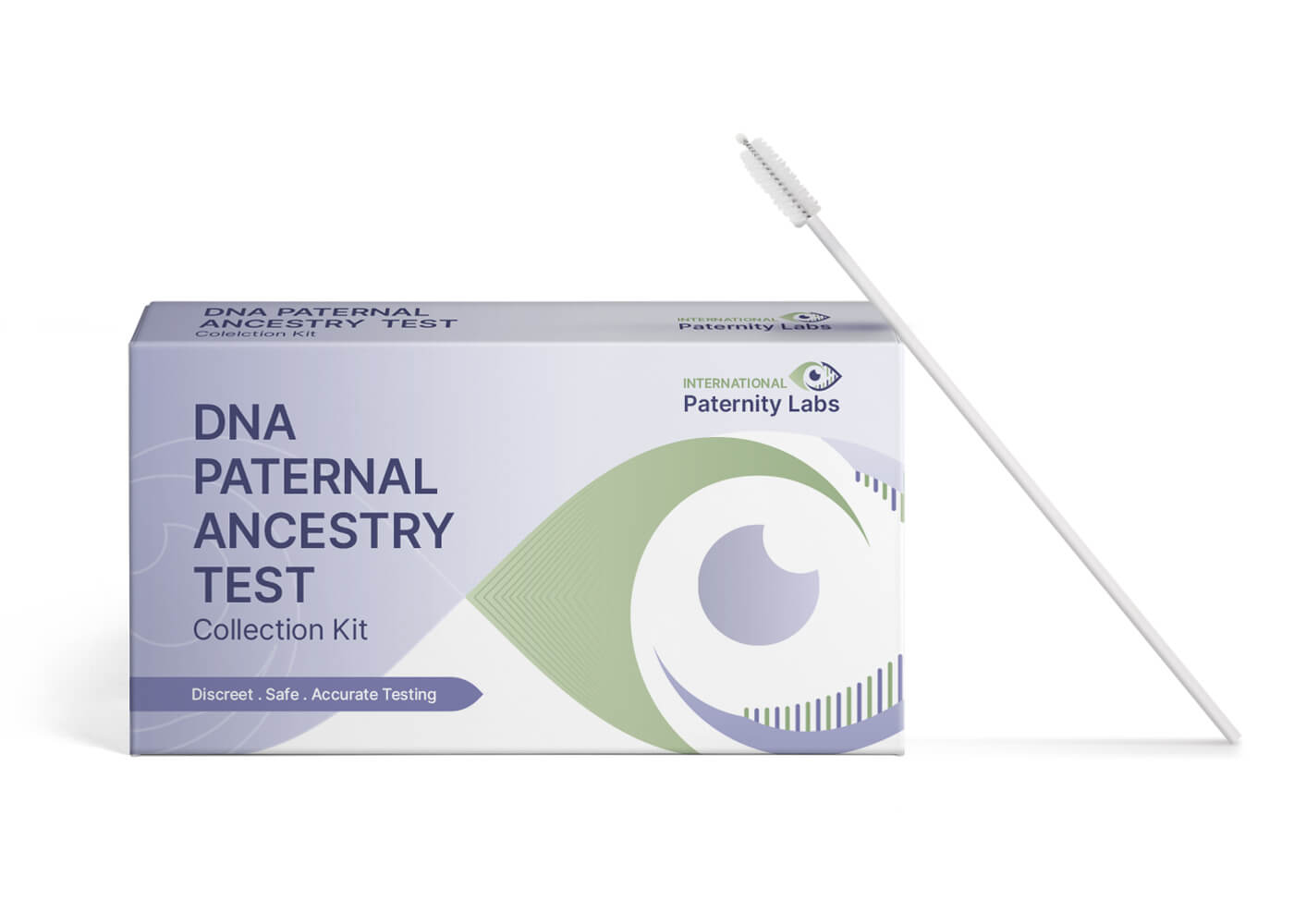DNA Paternal Ancestry Test
Trace your paternal ancestry using Y-DNA.
You will receive a certificate with the allele values for your Y-DNA STR markers. You will also receive a certificate which confirms which Y-DNA Haplogroup you belong to.
* The Paternal Ancestry Test examines DNA from the Y-chromosome (Y-DNA), which is exclusive to males. Only individuals of the male gender are eligible to undergo this particular test.
$119.00 – $339.00
DNA Tests

Order Your Confidential Home DNA Test Online!
- Test Description
All males carry Y-DNA which is inherited along the paternal line. Y-DNA testing allows you to trace the ancestry of your direct paternal lineage (your father’s, father’s, father’s… paternal lineage). Using your Y-DNA test results, you can find out whether you are linked to any other male individual along your direct paternal line; you can search a global database to seek long lost paternal line relatives from around the world; and you can find out which ancient Y-DNA Haplogroup you belong to. Please note that only males have Y-DNA so only males can take the Y-DNA test. Females wishing to trace their paternal lineage must test the Y-DNA of a male relative along their direct paternal line, such as a brother, father, male cousin, uncle, etc.
- What is the significance of Y-DNA STR markers?
All males carry Y-DNA which is inherited along the paternal line. Y-DNA testing allows you to trace the ancestry of your direct paternal lineage (your father’s, father’s, father’s… paternal lineage). Using your Y-DNA test results, you can find out whether you are linked to any other male individual along your direct paternal line; you can search a global database to seek long lost paternal line relatives from around the world; and you can find out which ancient Y-DNA Haplogroup you belong to. Please note that only males have Y-DNA so only males can take the Y-DNA test. Females wishing to trace their paternal lineage must test the Y-DNA of a male relative along their direct paternal line, such as a brother, father, male cousin, uncle, etc.
What is the significance of Y-DNA STR markers?
Y-DNA is unique because it is passed down strictly along the direct paternal line (father to son to grandson…) the same way that the surname is passed down from father to son. The paternal inheritance pattern of Y-DNA means that all males who have descended from the same forefather will have exactly the same Y-DNA. Y-DNA STR markers are special markers in the Y-DNA that mutate approximately once every 20 generations. All males who have descended from the same paternal line as you will have the same or very a similar Y-DNA STR marker profile as you.
What can I do with my Y-DNA STR markers?
Using the Y-DNA STR marker results, any two males can compare their Y-DNA STR profiles to see whether they descended from the same paternal line, and if yes, they can even determine how many generations ago they shared the same forefather. You can use your Y-DNA STR markers to compare with other individuals in your tree to confirm a positive linkage, verify new linkages or verify findings from your paper research. You can also use your Y-DNA STR markers to search our global database to find potential male matches from around the world. You can even choose to receive automatic notifications by email whenever a new match is found.
How many Y-DNA STR markers should I test and what is the difference between testing 20, 44 or 101 markers?
The more Y-DNA STR markers you test, the more stringent your comparisons will be when matching against another individual. For example, a 101/101 match with another individual will be a far stronger match than a 20/20 match and can give you a more precise measure of TMRCA (time to most recent common ancestor). TMRCA is a measure of approximately how long you and another person shared a common paternal ancestor. If you have a 20/20 match with another individual, testing of more markers will allow you to see if you continue to match when more markers are compared and provide further clarification of the relevance of the match as well as a more precise TMRCA estimate.
If I test 20 Y-DNA STR markers, can I test more markers at a later date?
Yes, if you test 20 markers, you can choose to test more markers later. However, you may be required to collect a new sample for the additional testing.
Highest Standards
- FAQs
What are Y-DNA Haplogroups?
Y-DNA Haplogroups are ancient patrilineal family groups which can be traced back to common origins in Africa over 100,000 years ago. DNA studies have shown that all humans living today can be trace their paternal origins back to common patrilineal roots stemming in Africa over 150,000 years ago. Over a period of tens of thousands of years, our ancient ancestors eventually journeyed out of Africa in different groups of migrations and journeyed along different migration paths to eventually settle in their final ancient homeland, eventually populating the rest of the world. These ancient family groups are called ‘Y-DNA haplogroups”. Each Y-DNA haplogroup is associated with a specific ancestral migration joureny which leads to a specific region of the world.
How is Y-DNA used to discover Y-DNA Haplogroups?
Y-DNA contains genetic markers called “SNPs”. SNP are small mutations which occur naturally in the DNA at a rate of approximately one mutation every few thousand years. Once a SNP marker appears in a person’s Y-DNA, it is passed down to all future male descendents. Today, our own Y-DNA contains an accumulation of many SNP markers which were passed down to us from our paternal ancient ancestors over a period of tens of thousands of years. By studying the SNP markers found in the Y-DNA of indigenous populations from around the world, scientists can determine approximately where and when each SNP marker first appeared. Analysing the Y-DNA SNP markers found in indigenous populations allows scientists to generate a phylogenetic tree showing how modern man branched out from common roots in Africa. The main branches of the tree represent “Y-DNA haplogroups” and the finer sub-branches of the tree are called “Y-DNA subclades”. Each Y-DNA haplogroup represents an ancient family group which can be traced to a distinct ancient migration path out of Africa to a final ancient ancestral destination in the world.
What will I find out when I know which Y-DNA Haplogroup I belong to?
By testing your Y-DNA, you can find out which Y-DNA Haplogroup you belong to. Once you know which Y-DNA haplogroup you belong to, you know which ancient migration path your ancient ancestors took, and you will also know the approximate area in the world that your ancestors eventually settled thousands of years ago. The following table shows the regions of the world that each Y-DNA Haplogroup is found:
If I test 20 Y-DNA STR markers, can I test more markers at a later date?
Yes, if you test 20 markers, you can choose to test more markers later. However, you may be required to collect a new sample for the additional testing.



